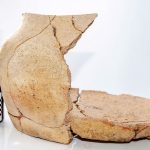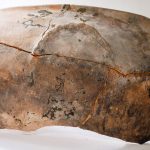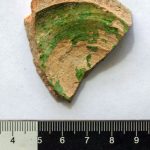Archaeological studies in the Chuy region of the Kyrgyz Republic
As part of the implementation of the State Program of the Republic of Tatarstan “Preservation of the national identity of the Tatar people (2020-2025)” and the international project “Medieval cities on transcontinental trade routes of Eurasia: urban centers of the Chuy valley and the Middle Volga region”, supported by IICAS grant, the Institute of Archaeology named after A.H. Khalikov continued studies of the medieval urban settlements in the central part of Chuy valley – the Ak-Su branch of the Great Silk Road.
During 2022 field research at the sites of Ken-Bulun and Sokuluk, located in the Chuy Valley (Kyrgyz Republic), an archaeological team of the Institute of Archaeology of the Tatarstan Academy of Sciences examined wall constructions and structures at three excavations with a total area of 140 m2, found a large number of ceramic fragments, including intact vessels.
In February 2023 in the laboratory of the Institute of History, Archaeology and Ethnology named after B. Jamgerchinov of the National Academy of Sciences of the Kyrgyz Republic under the guidance of the Research Fellow of the Museum of Archaeology of the Republic of Tatarstan, Candidate of Historical Sciences A.A. Kuklina the ceramics from the Ken-Bulun and Sokuluk settlements were studied. In total more than 1,500 fragments of mass and glazed ceramics were examined. The process included primary laboratory treatment (washing, marking of objects, photofixation), technical and technological analysis, graphic representation of vessel profiles, as well as reconstruction of the shapes of ceramic wares.
As a result of the laboratory works were obtained data on pottery production in these settlements: the main traditions of selection of raw materials and composition of molding masses, methods of manufacture of various types of pottery, the prevailing forms of cooking and table wares were determined. All this will allow us to better imagine the nature of the craft of the medieval cities population of the Chuy valley and understand the links between the various centers of production.
The most interesting and noteworthy finds were intact forms of pottery: a large 85 cm high hum, round-bottomed cauldrons, a miniature hand-made vessel, as well as fragments of glazed red clay bowls and molded decorated lids.








